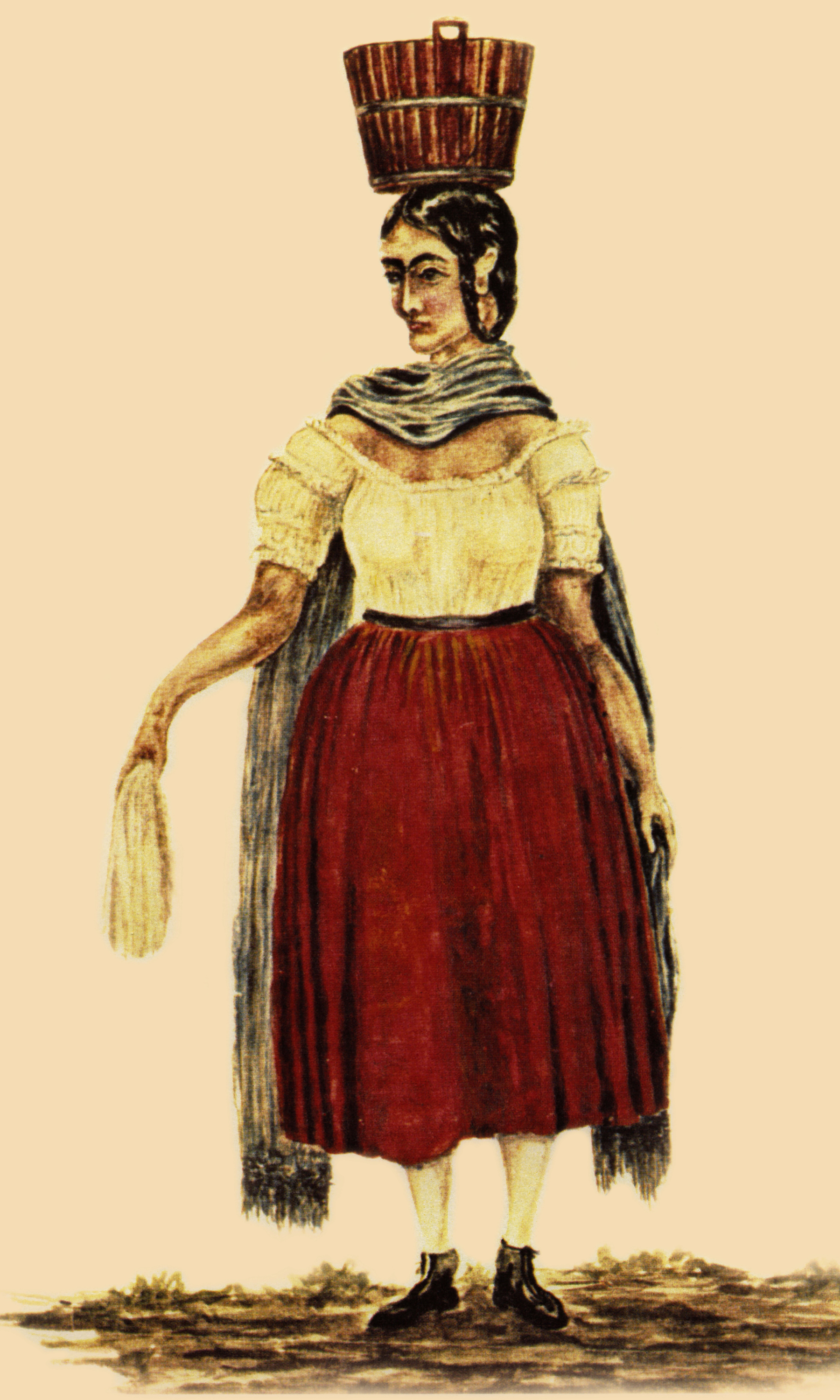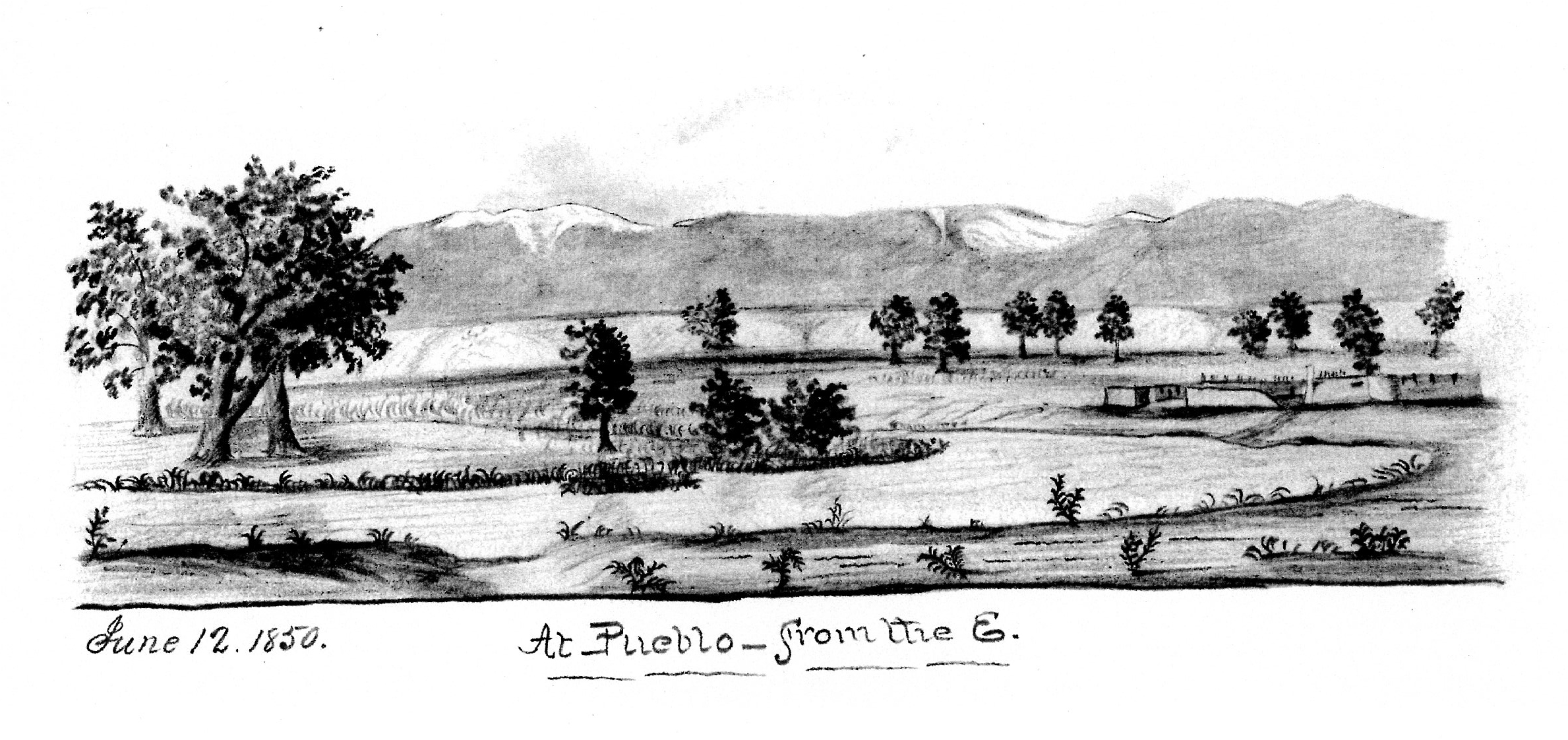Story
Teresita Sandoval: Trader, Homesteader, and Pioneer in Nineteenth-Century Colorado
Prior to gaining statehood in 1876, southern Colorado was home to a number of important trading outposts. These forts played a crucial role in the development of the Southwest before the annexation of the region by the United States. Throughout the early nineteenth century, the Southwest was a meeting ground of diverse nations and cultures, including a variety of American Indian tribes, as well as Spanish and French traders.
While many people associate this era of the American West with rugged mountain men, women were also critical to the development of the region. In many cases, women took on a diplomatic role, ensuring peaceful and prosperous trading relationships between Europeans and Indian tribes.

Teresita Sandoval was one of the founders of El Pueblo.
Teresita Sandoval was one of the first women of European descent to live in modern-day Colorado. Born in Taos, New Mexico, Sandoval eventually moved to Fort El Pueblo, a trading post along the Arkansas River. She was instrumental to the construction and operations at the outpost.
Sandoval and her second husband, Mathew Kinkead, tracked buffalo herds in order to capture and raise calves. Once the calves reached maturity, Sandoval and Kinkead would trek to Missouri to sell or trade the buffalos. The buffalo trade, however, was a dangerous business.
Firstly, Sandoval risked being attacked by the herds. To make matters worse, she was in constant competition with the plains tribes, who subsisted on buffalo hunts. As a product of the rugged Southwest, however, she understood how to navigate the region and its peoples. Ultimately, Sandoval and Kinkead found success raising and trading buffalos.
In addition to chasing buffalo herds, Sandoval and her husband grew a number of crops on their homestead. Their crops were useful not only for subsistence but also as trade commodities. As a trading outpost, Fort El Pueblo witnessed regular exchanges of goods, such as fur pelts, tools, jewelry, weapons, and food. It was here that Sandoval made a number of connections with well-known pioneers and mountain men, as well as powerful Indian traders.
Eventually, Sandoval and her husband separated, and Kinkead moved away to California. Around this time, Sandoval met the man who would turn out to be her third husband, Alexander Barclay. An immigrant from London, Barclay enjoyed the “free will, free trade and free thinking” that he found in the Southwest. Together, they moved away from Fort Pueblo to construct Fort Barclay in New Mexico.
Sandoval and Barclay’s relationship soon came to an end in the 1850s and she moved with her daughter and son-in-law on their southern Colorado ranch. In her later years, Sandoval fought to protect her family’s ranch from intruding ranchers after Colorado’s admission as a United States territory.
To prosper in the early-nineteenth-century Southwest was no easy feat. It required extensive knowledge about the terrain, the weather, and, most importantly, the complex network of relationships and rivalries between different peoples of the region. Indeed, Teresita Sandoval had all of these qualities.
However, the Southwest was in a state of constant flux during the nineteenth century. Once Mexico ceded the northern portion of its territory in 1848, Colorado fell under the domain of the United States. This had negative consequences for women like Sandoval. Prior to the Mexican-American War, Sandoval was able to maneuver the social and economic landscape with relative freedom. Under American law, many of these freedoms—such as owning and inheriting land—were revoked.
Despite the transition of power in the Southwest, Sandoval is still considered to be an important pioneer in the region, as well as one of the founders of Pueblo. As exemplified by the immense risks involved in the buffalo trade, Sandoval did not shy away from danger. Described by Janet Lecompte as “stubborn and hot-tempered,” yet “intelligent and courageous,” she was a true pioneer woman. Resilience—perhaps her most important quality—had allowed her to thrive in a harsh and unforgiving region.
Sources:
Lecompte, Janet. Pueblo, Hardscrabble, Greenhorn: Society on the High Plains, 1832–1856. P. 37.
Mora-Espinosa, Deborah. "Teresita Sandoval: Woman in Between." La Gente: Hispano History and Life in Colorado By Vincent C. de Baca, 1998.

